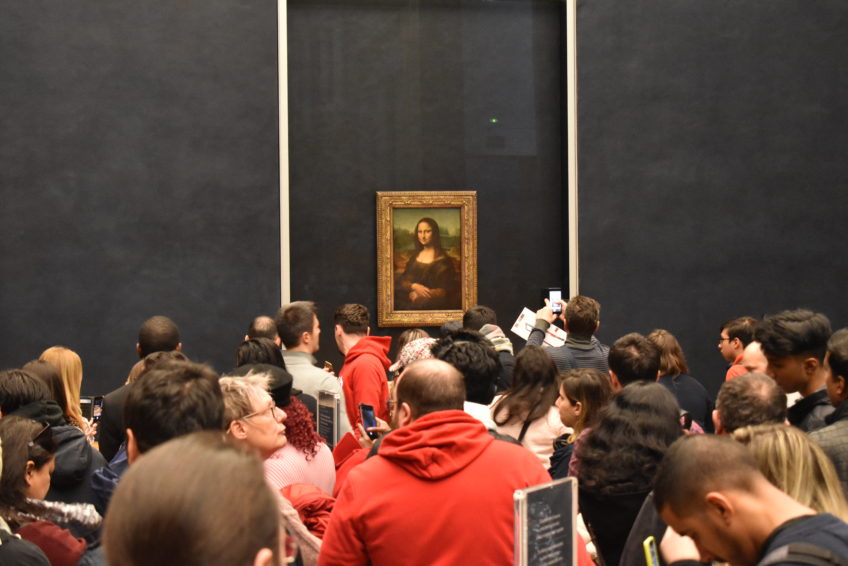My mantra in life is usually “early bird gets the worm,” however when it comes to the Louvre Museum it’s a whole ‘nother story. The early bird does NOT catch the worm here, the later crew does. If you are planning a trip to visit the Louvre, I highly recommend paying for the Last-Entry Louvre Tour. This tour is a 3-hour tour that ends right at closing. At the end of the night, everyone books it. With less crowds around, it only took us 10-15 minutes to get up close to Mona Lisa. I booked this Viator tour but the specific company is called “Walks.” Our tour guide, Susan, was very passionate about art and history and you could tell she enjoyed her job. Considering I’m not an art or history buff, I wasn’t sure if I could make it through 3 hours. I was wrong. During our 10 Days in Europe Christmas trip, this was one of the highlights. My fiance has an interest in arts and even attended a high school specifically for the arts.
Meet up at Arc de Triomphe Du Carrousel
In order to give you the full insider tips, let’s start from the beginning. Because the Louvre Museum is the largest art museum in the world, there are a TON of people swarming around. Considering my visit was in early December during low(er) season, I can’t even imagine what spring and summer look like. Because of the crowds, the tour operators have made it easy for travelers to meet up with them at the start of a tour.
On our vouchers, it said to head to the Arc de Triomphe Du Carrousel near the left angel. That was where we met our tour guide holding up her company’s sign. This arc is a triumphal arch in paris. It was built between 1806 and 1808 to commemorate Napoleon’s military victories of the previous year. On most walking tours we went on in Paris, Napoleon’s name was mentioned quite often. Fun fact: This arc is the smallest of the 3 arches on the Triumphal Way, the central axis between the Louvre and La Defense. Pro tip: Arrive a little earlier than the tour so you can get your outside pyramid photos. When you leave at closing time it will be dark outside.
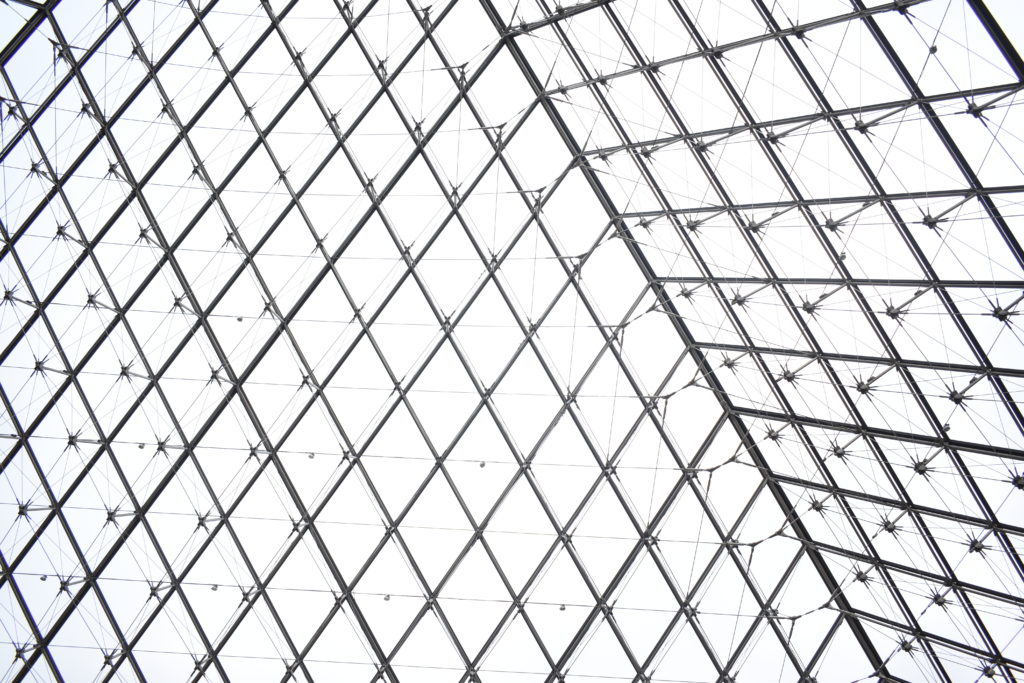
Security Check
Note that the Louvre Museum is broken down into 3 different wings:
- Sully – focuses on the history of the Louvre
- Richelieu – known for the sculptures and the apartments of Napoleon III
- Denon – home to Mona Lisa and the Winged Victory of Samothrace
Our tour group only went to Sully and Denon wings. Within 3 hours… still didn’t scratch the surface!
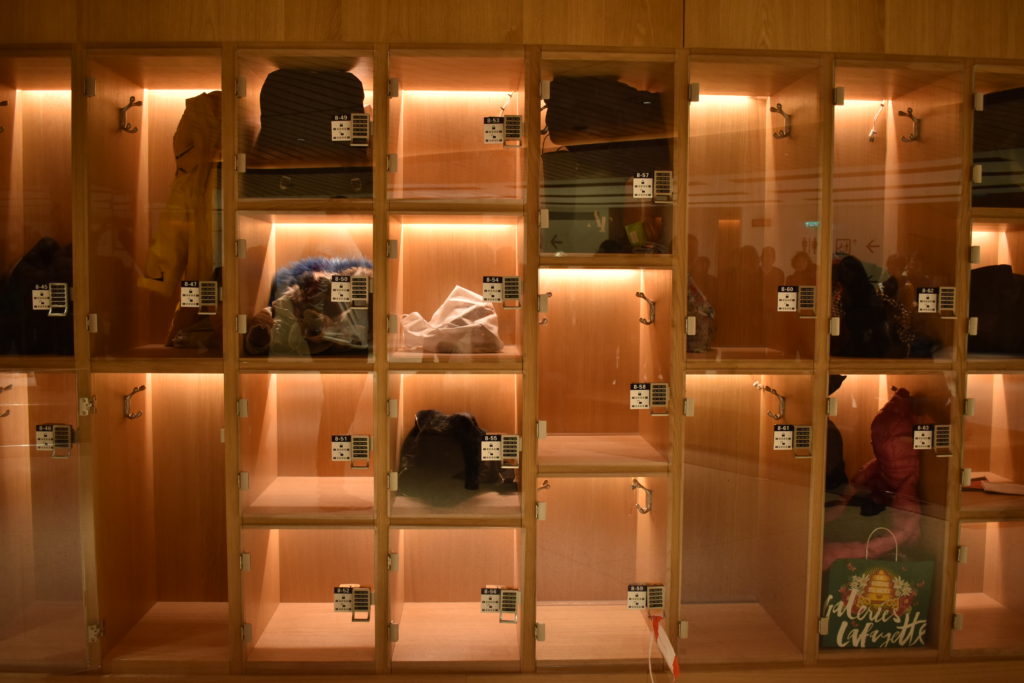
Sully Wing
We started our tour in the Sully wing. This wing is the oldest part of the Louvre. The Sully wing showcases French paintings, and historical treasures from Italy, Egypt and Greece. As you enter this wing you see medieval artifacts, with a walkway that takes you past old city walls. One these walls, you will find markings left by the stonemasons who built the castle in medieval times. Some of the hearts are upside down.
According to Wikipedia, “The keep was encircled by a deep, dry moat with stone counterscarps to help prevent the scaling of its walls with ladders. Accommodations in the fortress were supplied by the vaulted chambers of the keep as well as two wings built against the insides of the curtain walls of the west and south sides. The castle was a fortress, but not yet a royal residence; the monarch’s Parisian home at the time was the Palais de la Cite.” This wing is really neat for the history of the royal Napoleon family and what life was like SO many years ago. You’ll see a sign that says “you are by the foundation of the city-side facade of the Louvre castle (about 1380).”
Rounding a corner, you come face-to-face with a Sphinx.
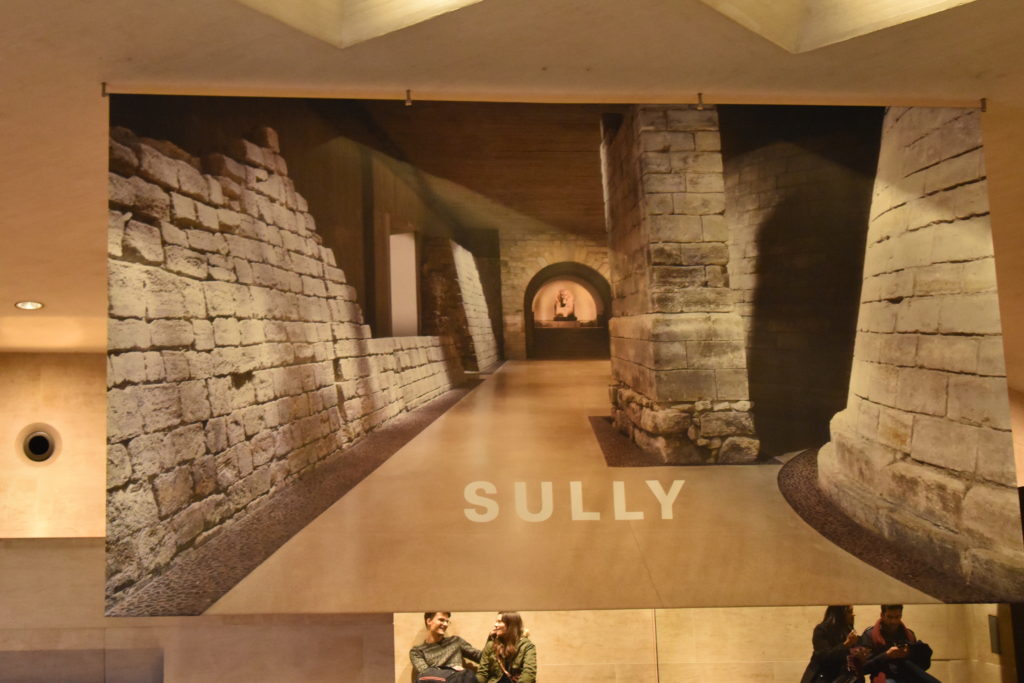
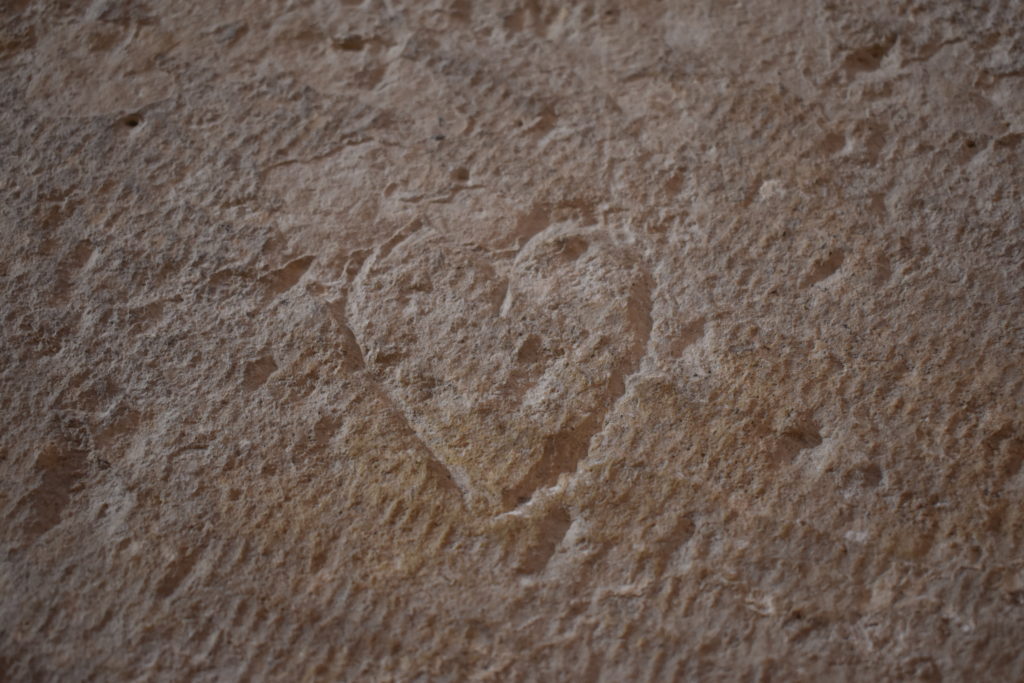
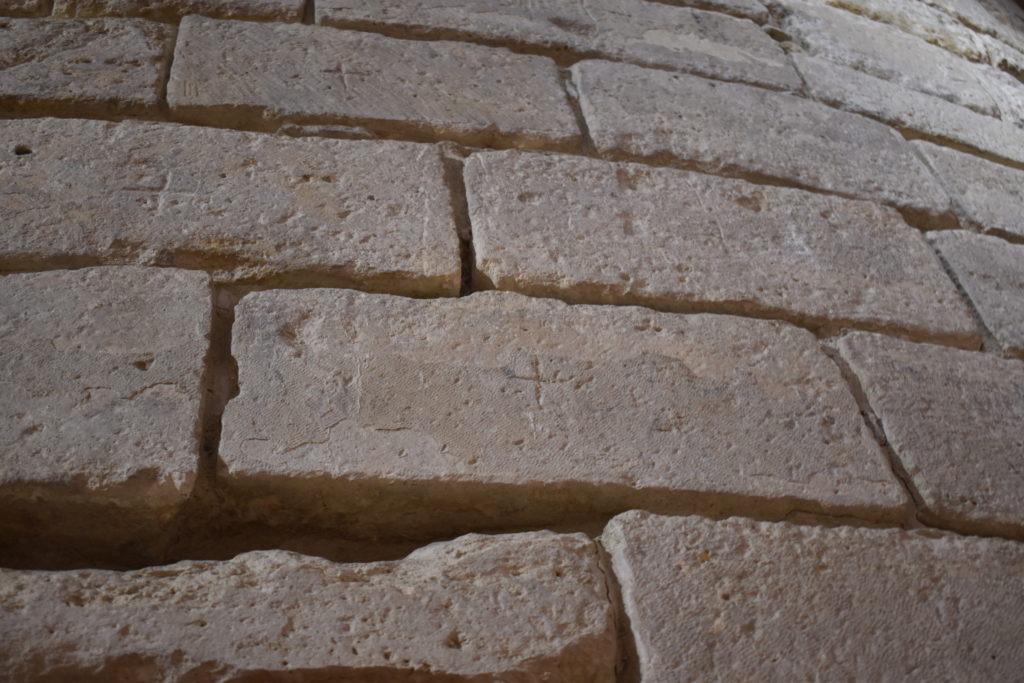
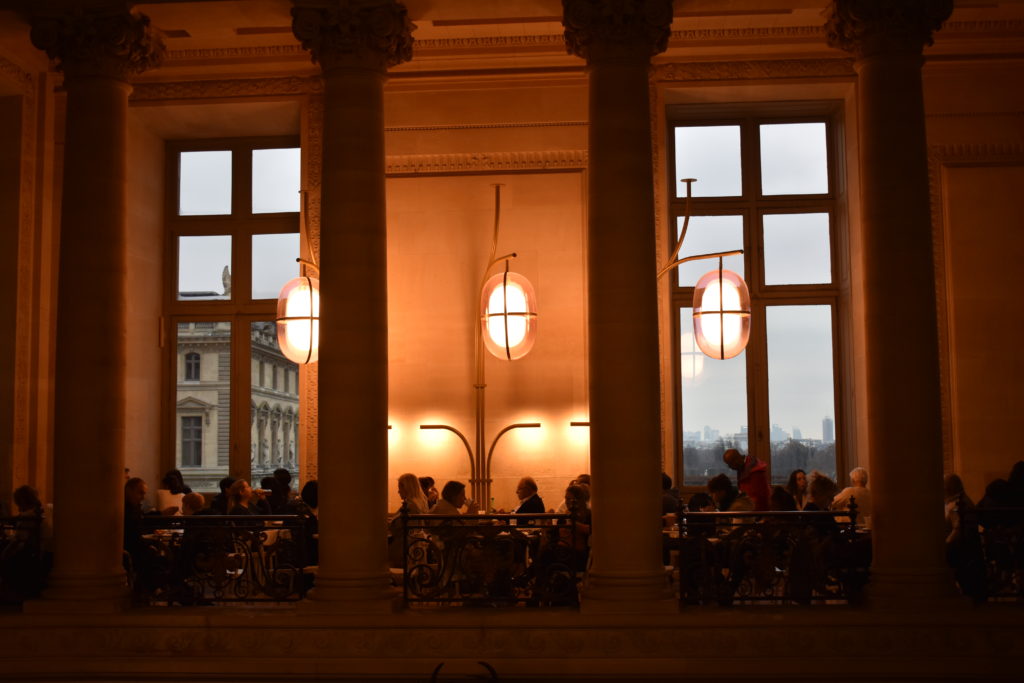
Zeus, dieu des cieux et maitre de l’Olympe
Pictured below, you’ll see the Zeus statue. It read “details of the statue of Zeus, god of the skys and master of the Olympus.” Italy inspired by a greek statue. 2nd century AC. Borghese Collection. Purchase 1807. During the time this statue was created, Susan told us artists used strong and empowering animals. Knowing that, it makes sense that a strong eagle is next to him.
Venus de Milo
Following Mona Lisa, the Venus de Milo is very popular on the “must see” list when visiting the Louvre. This was one of the first few stops on the Last-Entry Louvre Tour. The Venus de Milo was found on the Greek Island of Melos in the Cyclades in 1820. This was actually sculpted in parts and pieced together into a single sculpture. Her arms, unfortunately have not been found to this day. So there’s still some mystery behind her.
Part of this statue’s charm is that on one side of the face, you could see a woman (breasts). If you face her on the other side, you can see a man (Adam’s apple). The first picture I’m posting is from the side that resembles a man. The second photo is the picture that resembles a woman. It is also considered to be far advanced in its time.
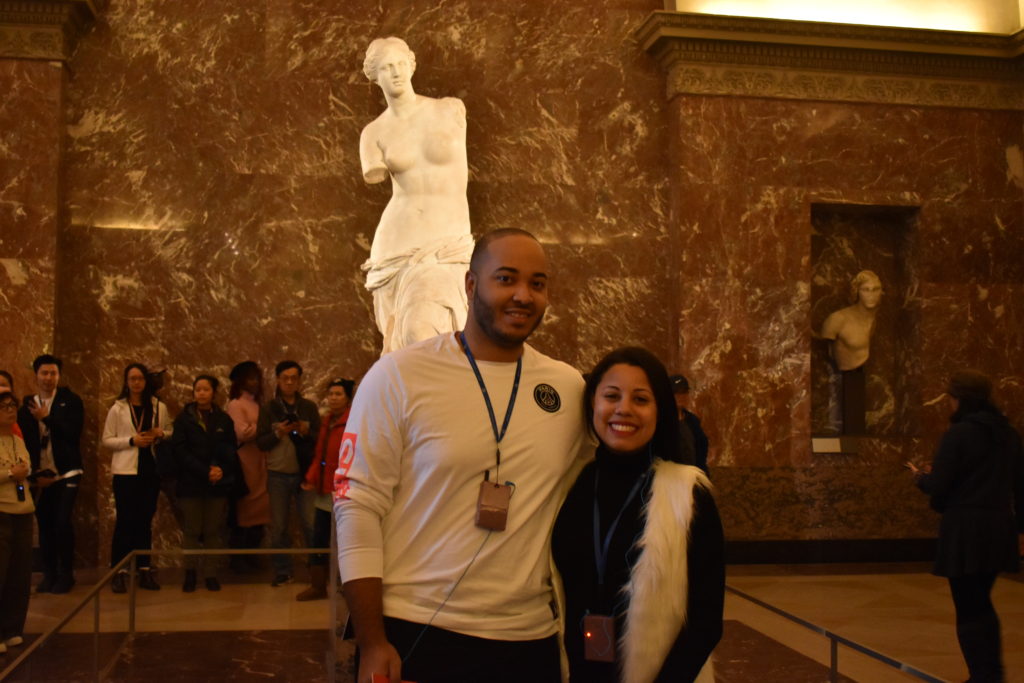
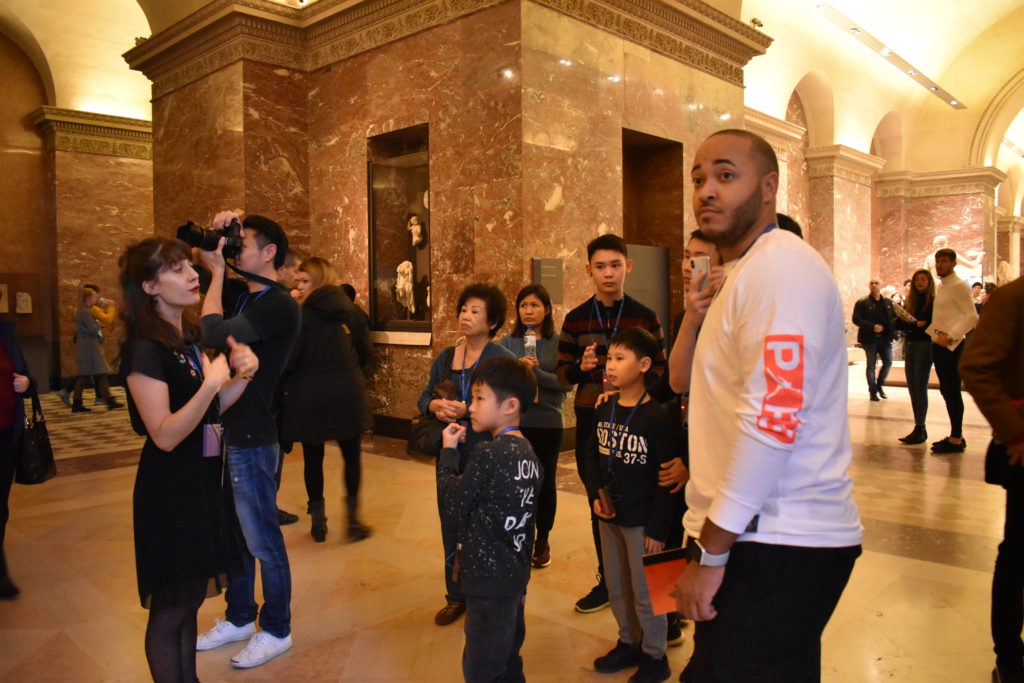
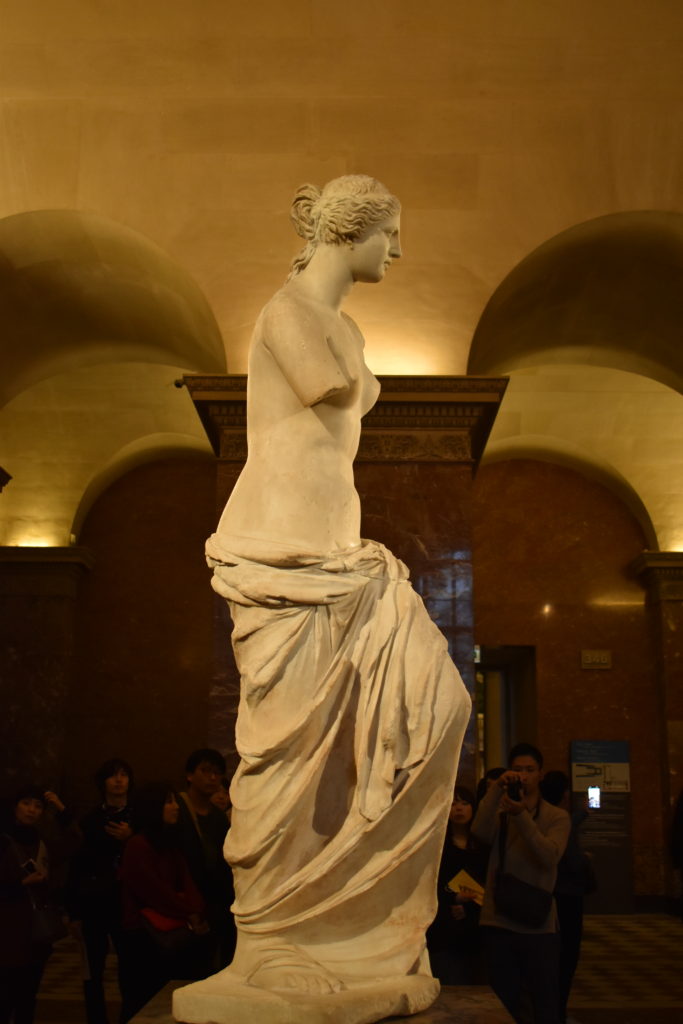
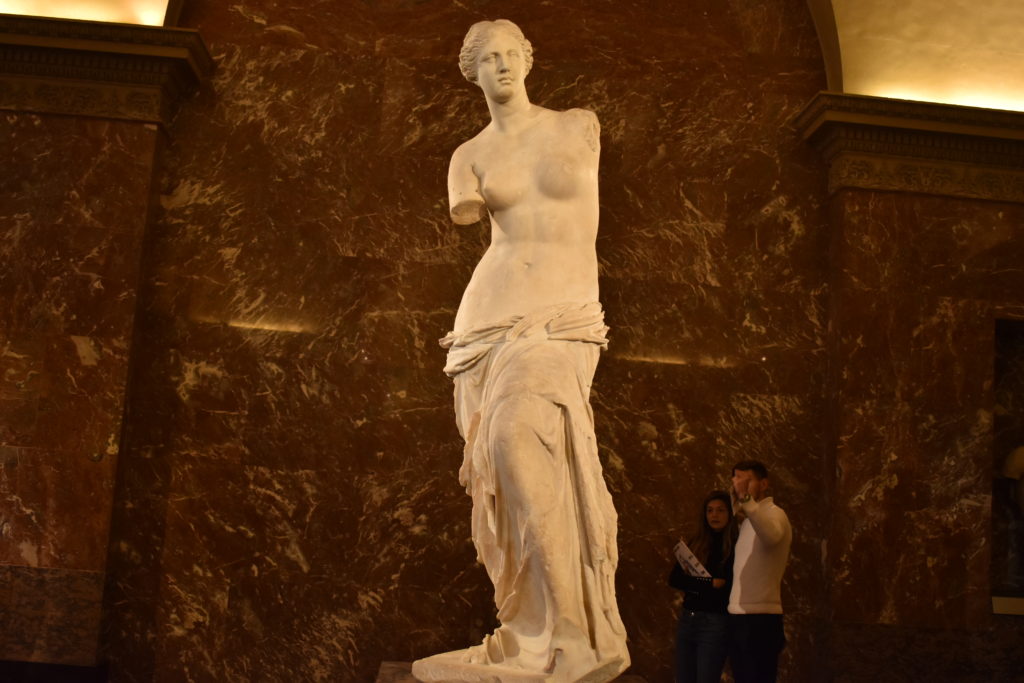
Sleeping Hermaphrodite
Continuing along the Sully Wing, as part of the Last-Entry Louvre Tour, we visited the sleeping hermaphrodite. Discovered in Rome, this statue was one of the most respected pieces of the Borghese Collection in the 17th and 18th centuries. It came to the Louvre after it had been bought, together with the rest of the Borghese Collection. Of course this statue, as the name implies, refers to both a man and woman coming together as one figure.
According to the Louvre Museum directly, “The work is designed to be viewed in two stages. First impressions are of a gracious and sensuous body that leads one to think that the figure is a female nude in the Hellenistic tradition; this effect is heightened here by the sinuousness of the pose. The other side of the statue then brings a surprise, revealing the figure’s androgynous nature by means of the crudest realism. This effect of contrast and ambiguity, indeed this taste for the strange that plays with the viewer’s emotions, is the result of the theatricality of some Hellenistic art. This utopian combination of two sexes is sometimes interpreted as a half-playful, half-erotic creation, designed to illustrate Platonic and more general philosophical reflections on love.”
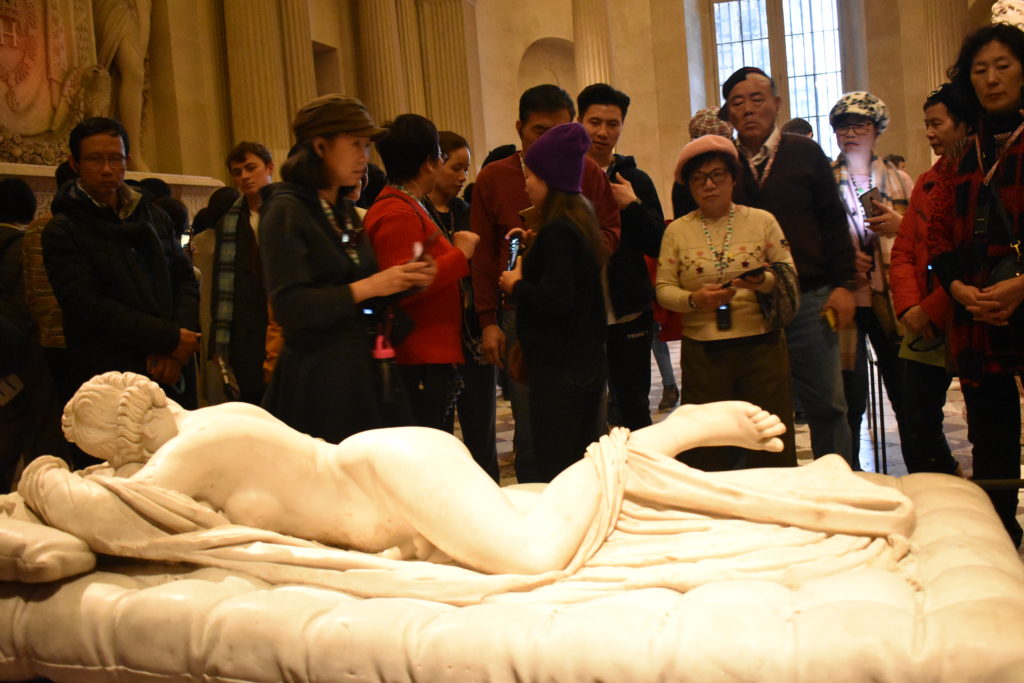
Denon Wing
We ended our Last Entry Louvre Tour with a trip to the Denon wing. The Denon wing is home to many popular works of arts like the Mona Lisa and The Rebellious Slave. There’s also a little cafe for those getting restless and peckish. Even after hours, you won’t even scratch the surface so if you need to take a break, no one will judge you for it.
One of the first stops of this wing was The Rebellious Slave. This statue was one of Michaelangelo’s works. The “Rebellious Slave” is portrayed trying to free himself from the fetters which hold his hands behind his back, contorting his torso and twisting his head. The impression given, which would have contributed to the spatial appearance of the monument, was that he was moving towards the viewer, with his raised shoulder and knee. It’s a very empowering statue that dates back to 1513.
Winged Victory of Samothrace
Moving right along on the tour after seeing a few more sculptures along the way, we made it to the Winged Victory of Samothrace. It’s a marble Hellenistic sculpture of Nike (the Greek goddess of victory). It’s one of the major Hellenistic statues surviving in the original, rather than Roman copies.
Fun Fact
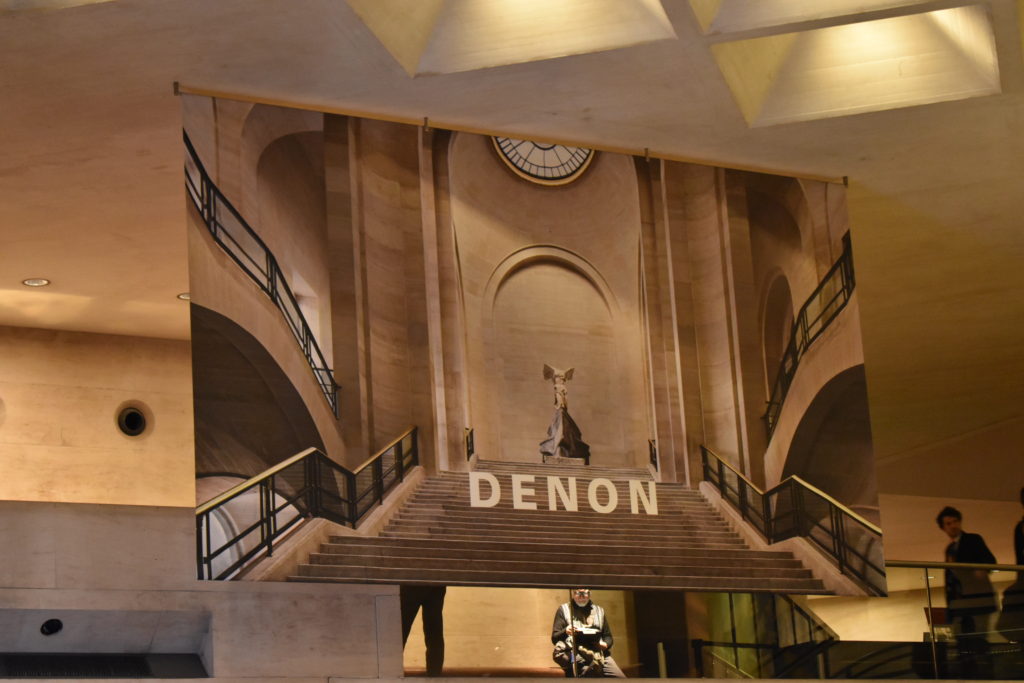
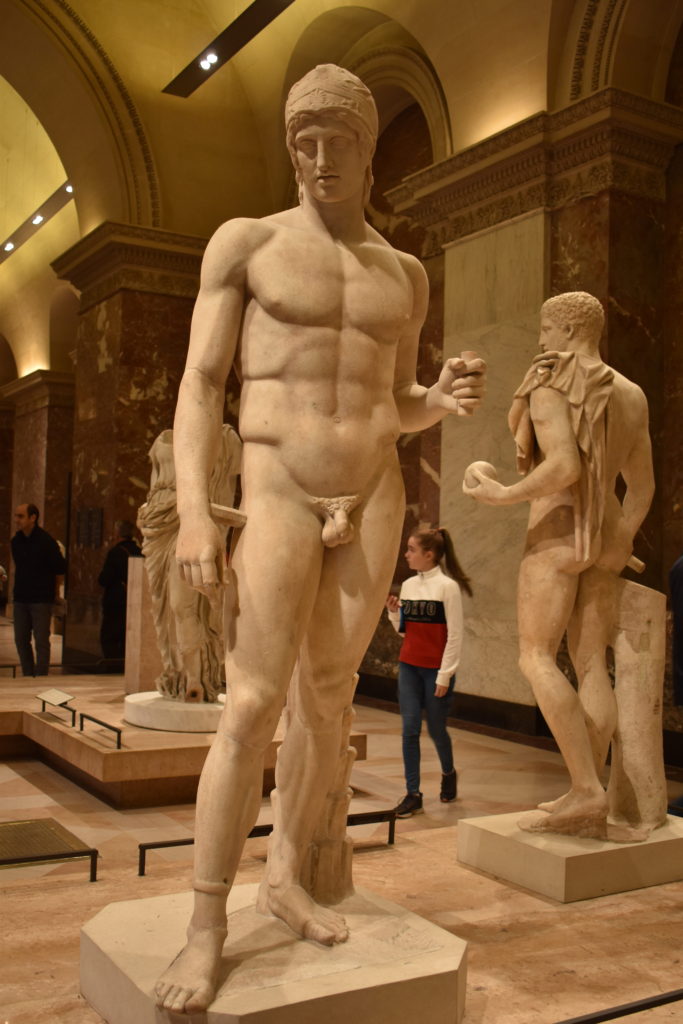
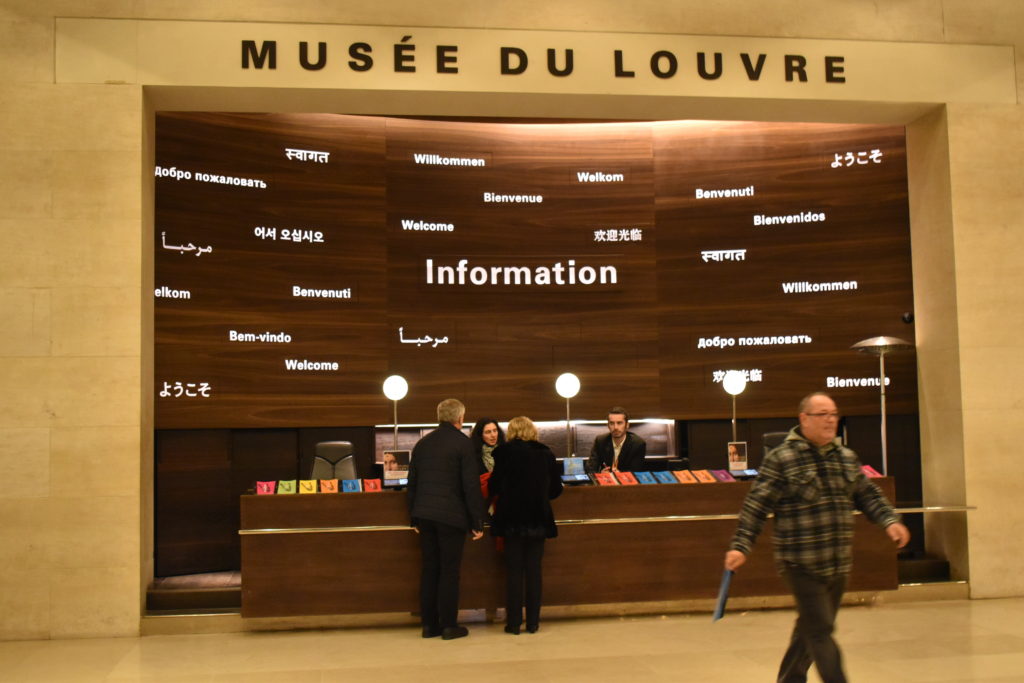
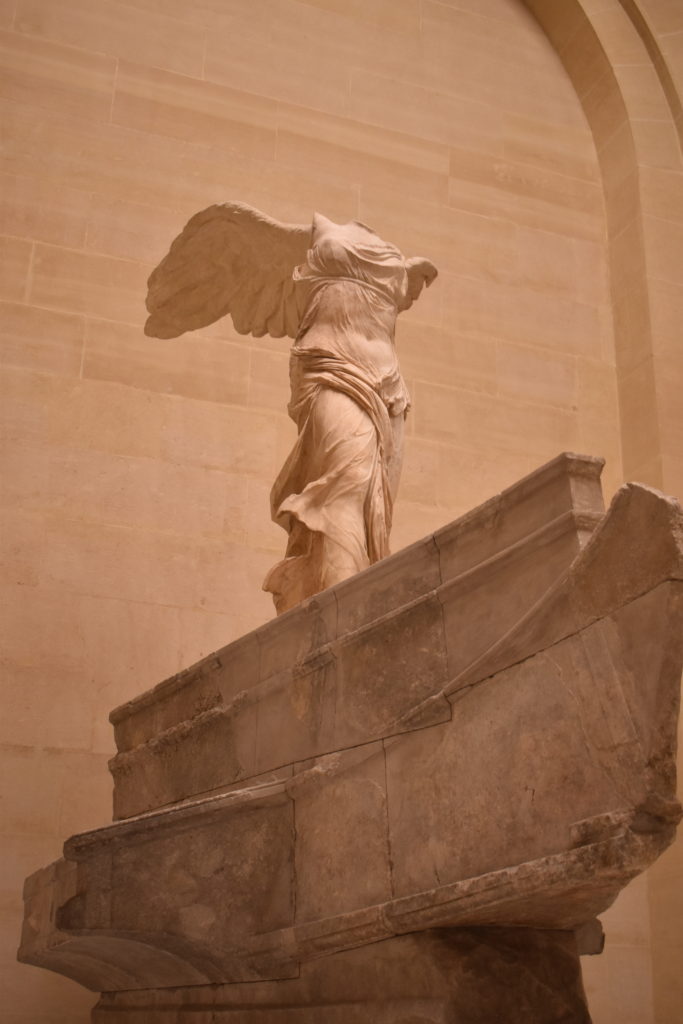
Mona Lisa
Finally what we’ve alllllll been waiting for. The finale of our Last Entry Louvre Tour… MONA LISA! One of the most popular works of art from Leonardo da Vinci. It’s considered an archetypal masterpiece of the Italian Renaissance. There are so many theories about the significance of this Mona Lisa. What is 100% factual is that this painting was stolen from the Louvre Museum on August 21, 1911. Clearly, back then security was nowhere near what it is today. That was one of the reasons this painting earned its fame.
This painting is also known as La Gioconda and is considered the most famous painting in the world. La Gioconda was the wife of Francisco del Giocondo. This painting is painted as oil on word. Leonardo Da Vinci.net claims, “This figure of a woman, dressed in the Florentine fashion of her day and seated in a visionary, mountainous landscape, is a remarkable instance of Leonardo’s sfumato technique of soft, heavily shaded modeling. The Mona Lisa’s enigmatic expression, which seems both alluring and aloof, has given the portrait universal fame.” There’s many theories behind her smile.
What some people enjoyed doing was walking around to see if Mona Lisa’s eyes followed them. It’s rumored that her eyes will follow you. Creepy, yet cool at the same time. Although there was still a crowd there during slow season early December, there was still a number of people (as you can see below).
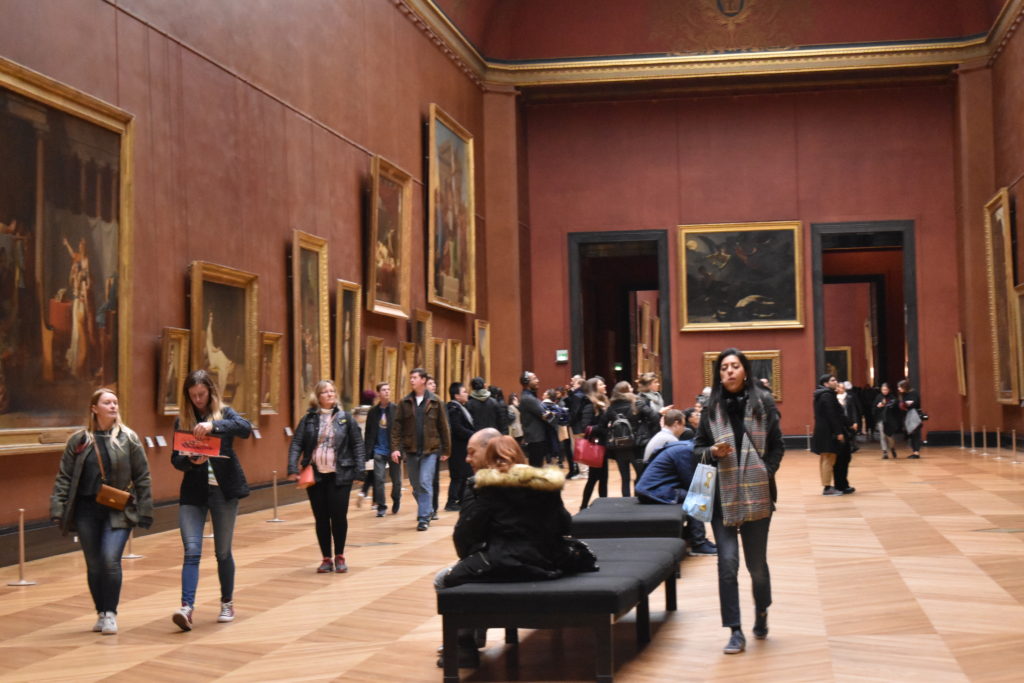
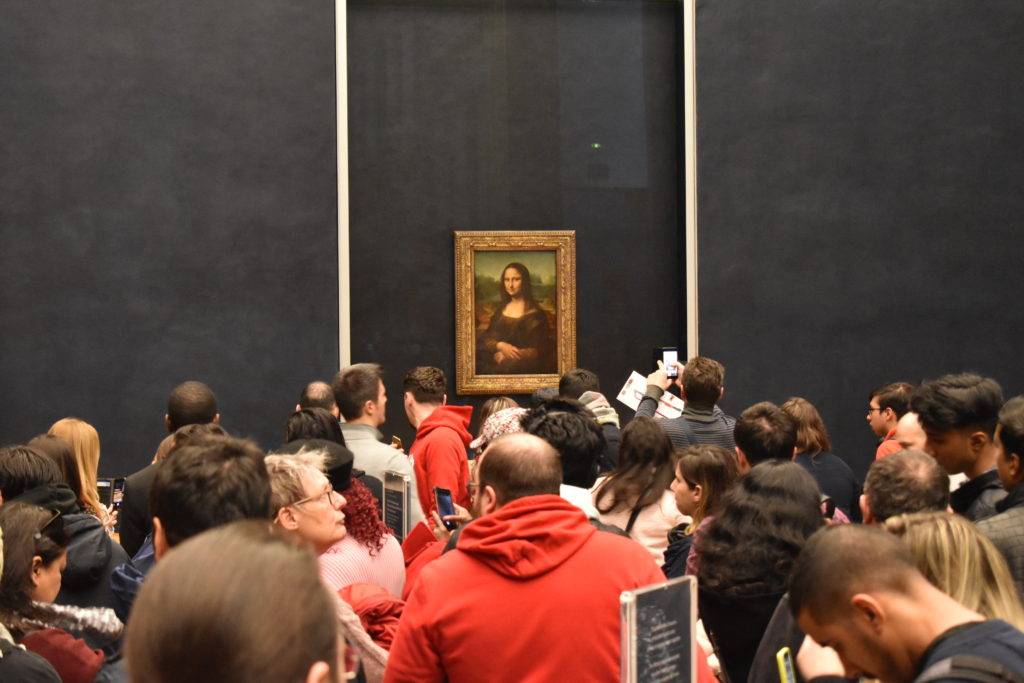
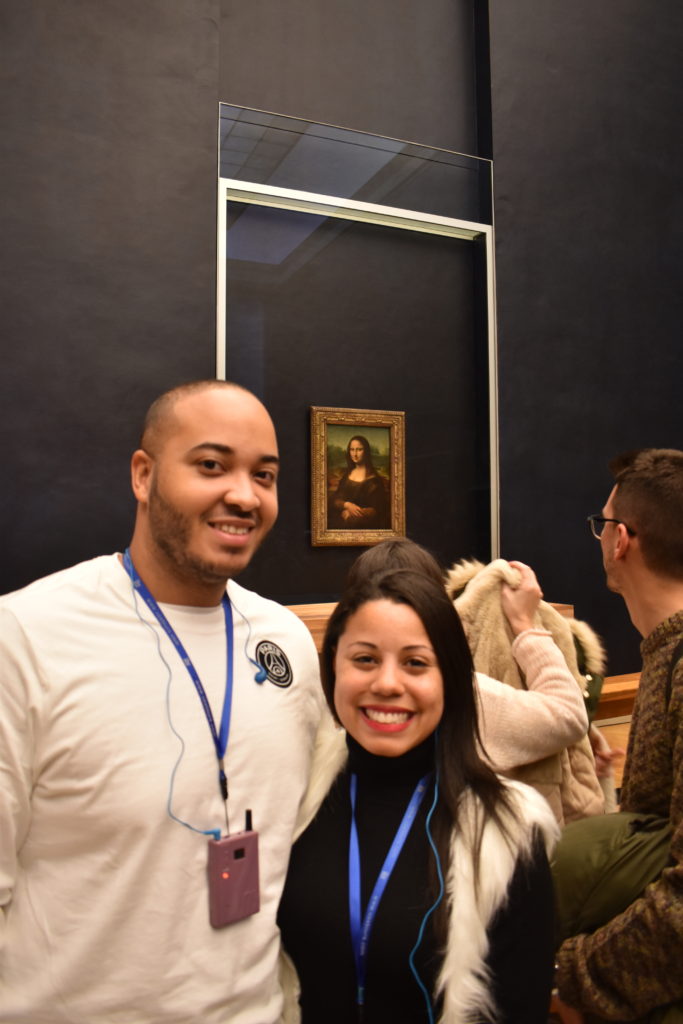
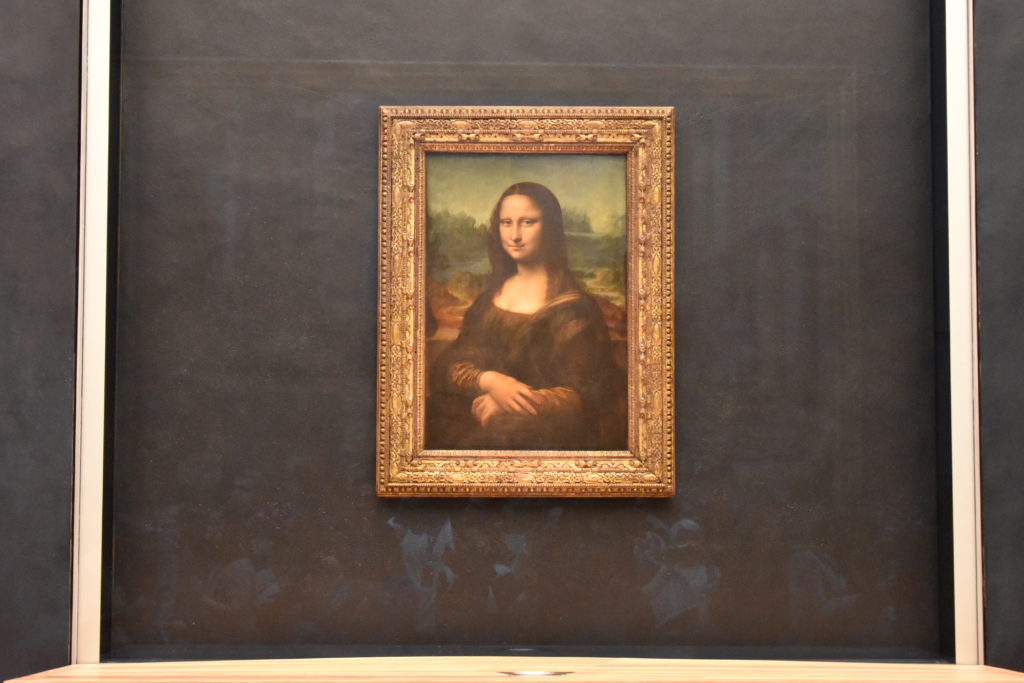
The Wedding Feast at Cana
After seeing Mona Lisa, most travelers just walk off. But directly in front, you’ll find a painting called The Wedding Feast at Cana by Paolo Veronese. I didn’t want to end this blog post without mentioning the MASSIVE painting in front of Mona Lisa. Don’t quote me on this, but I believe it is the largest painting in the entire museum. The Wedding Feast at Cana, by the Italian artist Paolo Veronese, is a representational painting that depicts the biblical story of the Marriage at Cana, at which Jesus converts water to wine. Pictured below.
According to Wikipedia, “The art of the High Renaissance (1490–1527) emphasized human figures of ideal proportions, balanced composition, and beauty, whereas Mannerism exaggerated the Renaissance ideals — of figure, light, and colour — with asymmetric and unnaturally elegant arrangements achieved by flattening the pictorial space and distorting the human figure as an ideal preconception of the subject, rather than as a realistic representation.“
We were told that back then clean drinking water was a privilege. It was much cheaper to consume wine. She mentioned that this was depicting a wedding between two poorer people back then. People can also spin this painting’s meaning many times.
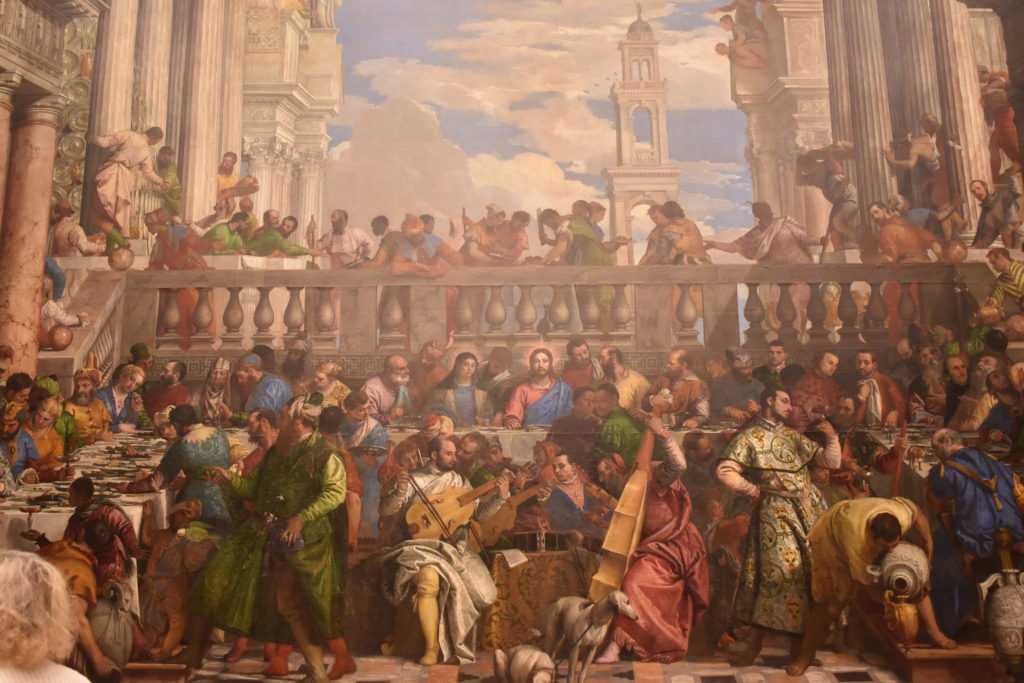
Closing Time
Right around the closing mark, all of the security guards were rushing you to leave the building. Although the museum was closed, the gift shop was not so we snuck in there for a bit before actually leaving. You could buy some last minute (overpriced!) souvenirs. Overall, we enjoyed ourselves on this tour and highly recommend it if you’re looking for a few less crowds. Hope you enjoyed my full insider review of the Last-Entry Louvre Tour. If you’re planning a trip to Paris and would like a quote, please send me an email: cassandra@accent-on-travel.net. Working with me is 100% free as I get paid a commission through my suppliers after you book. I can price match and offer a super easy payment plan. No trip is out of reach!

